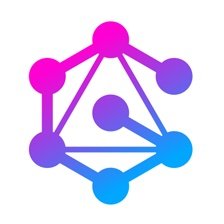Okay, so this'll take a few moments. While that's spinning up, I'm going to download this news dump. So let's copy that. And this'll just download a zip archive from S3. That's fairly small. I think it's only maybe like 10 megs or something like that. And then once my Aura instance is up and running, and this'll take a minute or so to spin up, then we can import our news dump.
Once we have that running, you have just a preview of where we're gonna go with this, and then we'll pause for a few minutes. This will load the NewsGraph datasets. I'm at the snapshots, so it doesn't have the most recent news. It's from I'm not sure when I took it, maybe a month or so ago, but the same basic data model. So articles, authors, topics, people, organizations, and georegions about news from the New York Times API. I linked the site for the New York Times API. It's free, you just need to request a developer key to work with this data. It's a good dataset for building applications. They also have things like book reviews and other. I think they have sort of their own knowledge graph for more information about people, these sorts of things. But if you're interested in more in this data set, this GitHub repository, which I'll link in the chat. This has the code I showed earlier, the GitHub Action for fetching this data. But then there's some examples for how to work with the data in Cypher. There's a graphQL directory, which we're gonna look at in a moment. And then also, I did a workshop on building a Cloudflare workers API to fetch this data. Anyway, so that is all online.
Let's see, is our Aura instance not up yet? So maybe let's go ahead and pause here for a few minutes for everyone to have a chance to go ahead and sign into Aura, create a new blank instance, download the dump archive. And we'll wait a few minutes for that to spin up and then load that dataset. So we'll pause here for a few minutes. Maybe we'll come back at 15 after the hour. That's in four minutes. So if you run into any issues, let us know in the chat and we'll get that figured out because we do wanna have our Aura instance with our dataset loaded before we move on.
While we're waiting I'll just go through the steps here. Now that mine is running, we can tell it's up and running because we see this green circle that says running. So I'm gonna click on this and I can see some sample code and whatnot, but I wanna go to import database. I can either drag and drop or click, oops, that's not what I meant to click on. That's why I have a larger dataset. I'm gonna click on this and browse and this is just downloaded to my downloads folder News-Graph, mine has number three because this is the third time I've downloaded it. It's called News-Graph.dump. Warnings is gonna replace my empty database. Yep, that's fine. And so this will take a few minutes to upload and then restart the database, but okay. Now we will pause to give everyone a chance to go through this process and get your aura instance set up and then when we come back, we will take a look at building a GraphQL API.
So I see a question from Anthony. Oh yeah, talking about the new UI and aura not having an option to upload a dump file only CSV. Yeah, so let's look at that. That's a good point. So there's a new workspace. I think it's called workspace experience for Neo4j aura. And so you may, I think it's now the default. So you have this open button, which my database is restarting. So it won't load right now. Otherwise, and then you can toggle between this. If I click on my user icon, it says I'm using the new workspace experience. Or I can switch back to the classic experience where I have things like explore query import. So that's one thing we can toggle back and forth between those. I'll talk about what that is in a second, it's basically a different way of combining the things like Neo4j browser, Bloom and a data importer option.
So here's what that looks like. If I click open, that will take me to a workspace and I can connect to my instance. And Anthony, if you're looking at the import, that's where the option for uploading CSVs is. But what I wanna do to upload a dump file instead is to click on the card. Like, I should've said this earlier, not click on the open icon, but if I click on the card for the database, then I get this screen. And here I can go to import database and click browse to find my dump file. So if you find yourself in this screen, so if you find yourself in this screen which is import for uploading CSVs, that's not the one we want where, this is the data import tool, which is really cool, a way to visually define a graph model from CSV files, which is quite neat. The query bar, this is similar to Neo4j browser, we have similar functionality here and then explore. This is the bloom visualization tool, which I showed a couple of screenshots before. So the new workspace UI, the idea is to combine, what were previously different developer tools into a single developer tool. Anyway, yeah, so instead what we want is go back to the Aura console, click on the card for our database and look for the import database option. Cool, Anthony, cool, it says you figured that out. Cool, anyone else get stuck with anything? Is there anyone else done, anyone else able to start their Aura instance and then also upload the dump file? Let us know if you got through that or even if you didn't, if you're stuck on something. Once the data is loaded, you'll see the number here for nodes, what do we have? We have 31,000 nodes and 80,000 relationships. And you'll see like a percentage of, what is this, 200,000 and 400,000. So the free tier has a limit on the size of the data that we can store.













Comments